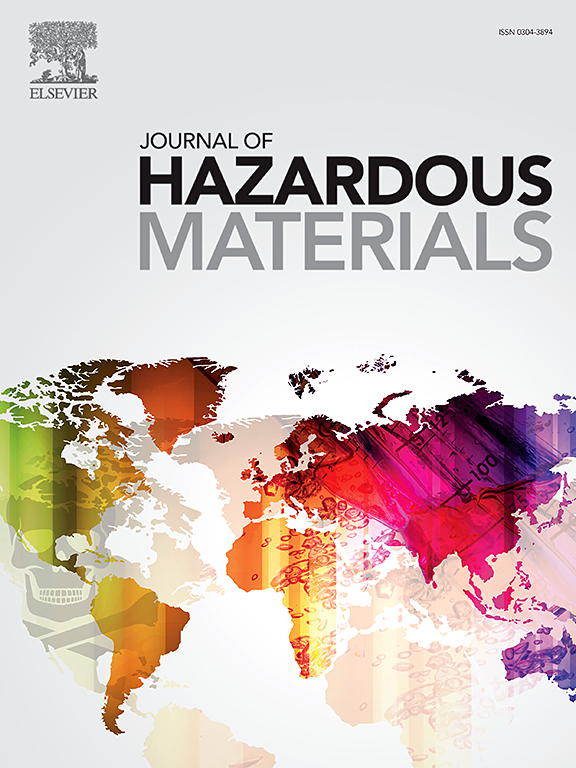Coupled nitrate-to-ammonia reduction and persulfate production for ciprofloxacin removal via Cu2O/Cu nanorod and BDD electrodes
IF 11.3
1区 环境科学与生态学
Q1 ENGINEERING, ENVIRONMENTAL
引用次数: 0
Abstract
Electrocatalytic nitrate reduction (NO3RR) processes that use actual aqueous nitrate pollution as a feedstock for ammonia production have two chief challenges for realization: (i), conversions are limited to neutral conditions and (ii) electrocatalysts are unable to drive nitride protonation while inhibiting hydrogen evolution. Herein, a facile electrodeposition method was applied to prepare Cu2O/Cu nanorods on copper support, which exhibited an ammonia production rate of 454.1 μmol h−1 cm−2 and Faraday efficiency of 96.8 % at −0.9 V versus a reversible hydrogen electrode in neutral medium. Through application of a boron doped diamond electrode in anodic bath, persulfate production of 310.2 μmol h−1 cm−2 (18.2 % improvement in Faraday efficiency) afforded simultaneous degradation of a nitrogen-containing contaminant (ciprofloxacin). The high electron density of Cu sites on Cu2O/Cu inhibited competing hydrogen evolution and accelerated nitrate transformation. Generation of oxidative radicals (SO4•− and •OH) on boron doped diamond electrode in sulfate electrolyte showed the possibility for simultaneous degradation of organic pollutants.

通过Cu2O/Cu纳米棒和BDD电极耦合硝酸盐-氨还原和过硫酸盐脱除环丙沙星
电催化硝酸还原(NO3RR)过程使用实际的硝酸盐水污染作为氨生产的原料,实现这一过程面临两个主要挑战:(i)转化仅限于中性条件;(ii)电催化剂无法在抑制氢析出的同时驱动氮化物质子化。本文采用简易电沉积方法在铜载体上制备了Cu2O/Cu纳米棒,与中性介质中可逆氢电极相比,在−0.9 V下的氨生成率为454.1 μmol h−1 cm−2,法拉第效率为96.8% %。通过在阳极浴中应用掺硼金刚石电极,过硫酸盐产量为310.2 μmol h−1 cm−2(法拉第效率提高18.2% %),同时降解含氮污染物(环丙沙星)。Cu2O/Cu表面Cu位的高电子密度抑制了竞氢析出,加速了硝酸盐的转化。在硫酸电解质中,硼掺杂金刚石电极上氧化自由基(SO4•−和•OH)的生成表明了同时降解有机污染物的可能性。
本文章由计算机程序翻译,如有差异,请以英文原文为准。
求助全文
约1分钟内获得全文
求助全文
来源期刊

Journal of Hazardous Materials
工程技术-工程:环境
CiteScore
25.40
自引率
5.90%
发文量
3059
审稿时长
58 days
期刊介绍:
The Journal of Hazardous Materials serves as a global platform for promoting cutting-edge research in the field of Environmental Science and Engineering. Our publication features a wide range of articles, including full-length research papers, review articles, and perspectives, with the aim of enhancing our understanding of the dangers and risks associated with various materials concerning public health and the environment. It is important to note that the term "environmental contaminants" refers specifically to substances that pose hazardous effects through contamination, while excluding those that do not have such impacts on the environment or human health. Moreover, we emphasize the distinction between wastes and hazardous materials in order to provide further clarity on the scope of the journal. We have a keen interest in exploring specific compounds and microbial agents that have adverse effects on the environment.
 求助内容:
求助内容: 应助结果提醒方式:
应助结果提醒方式:


